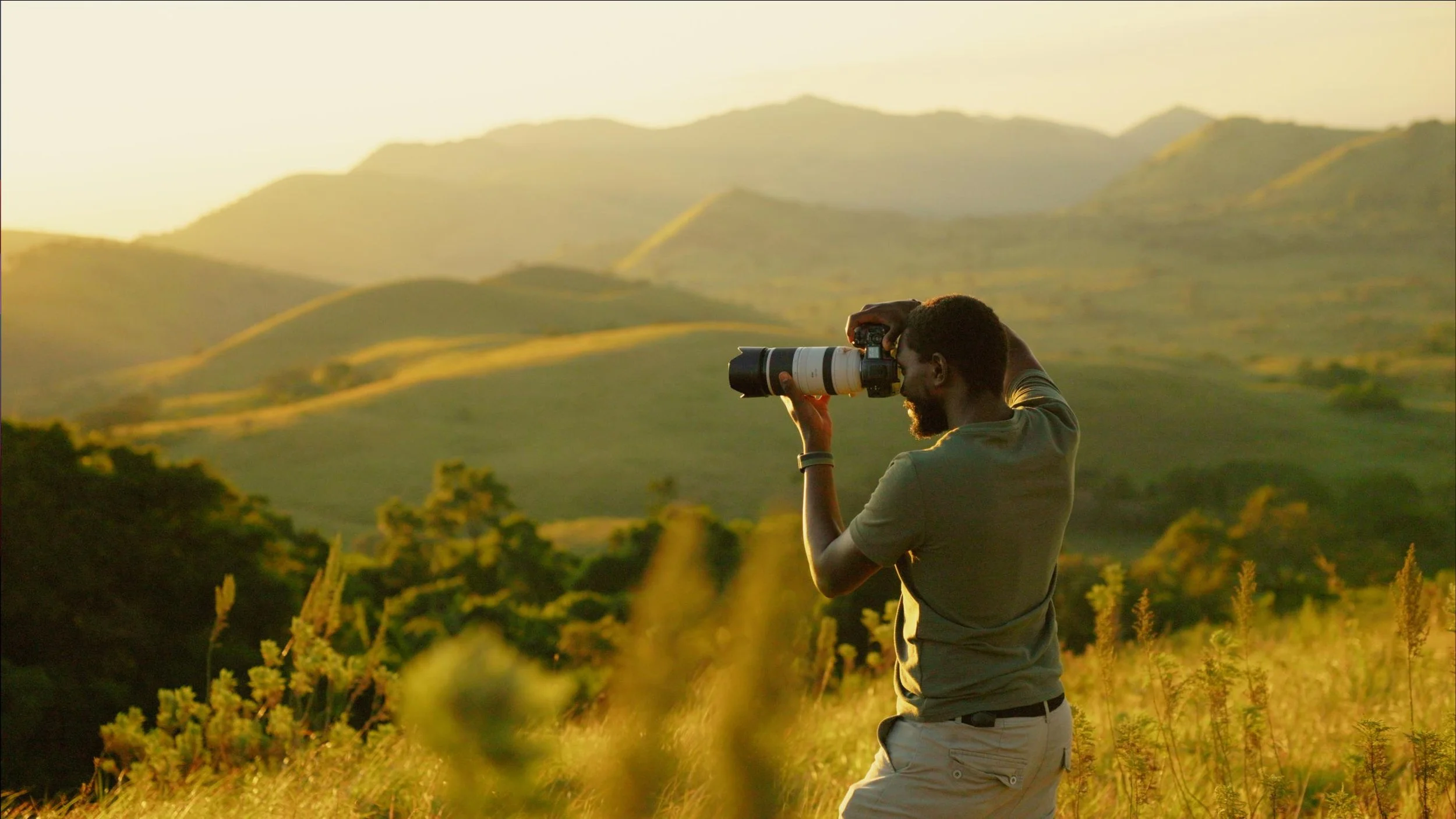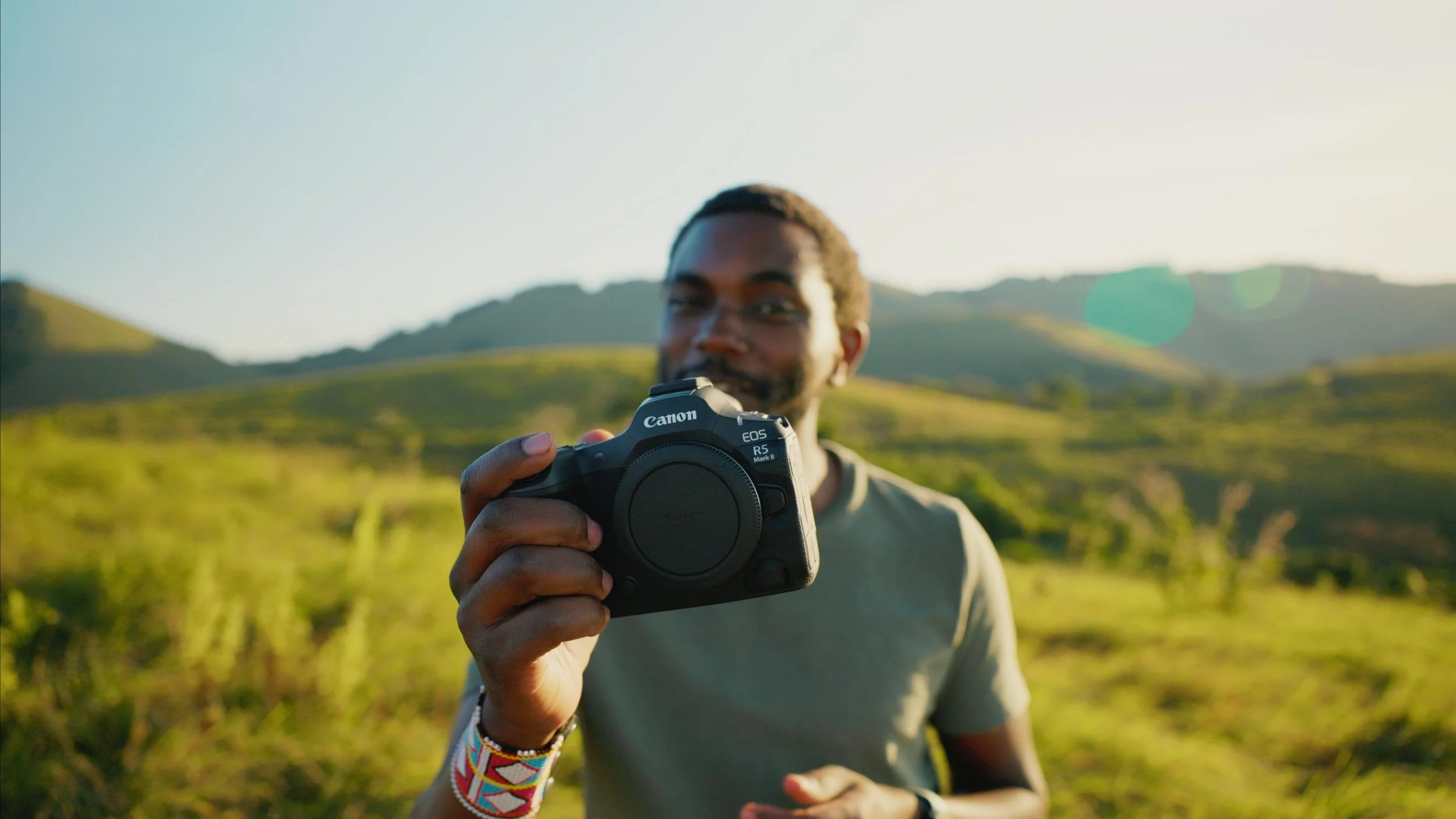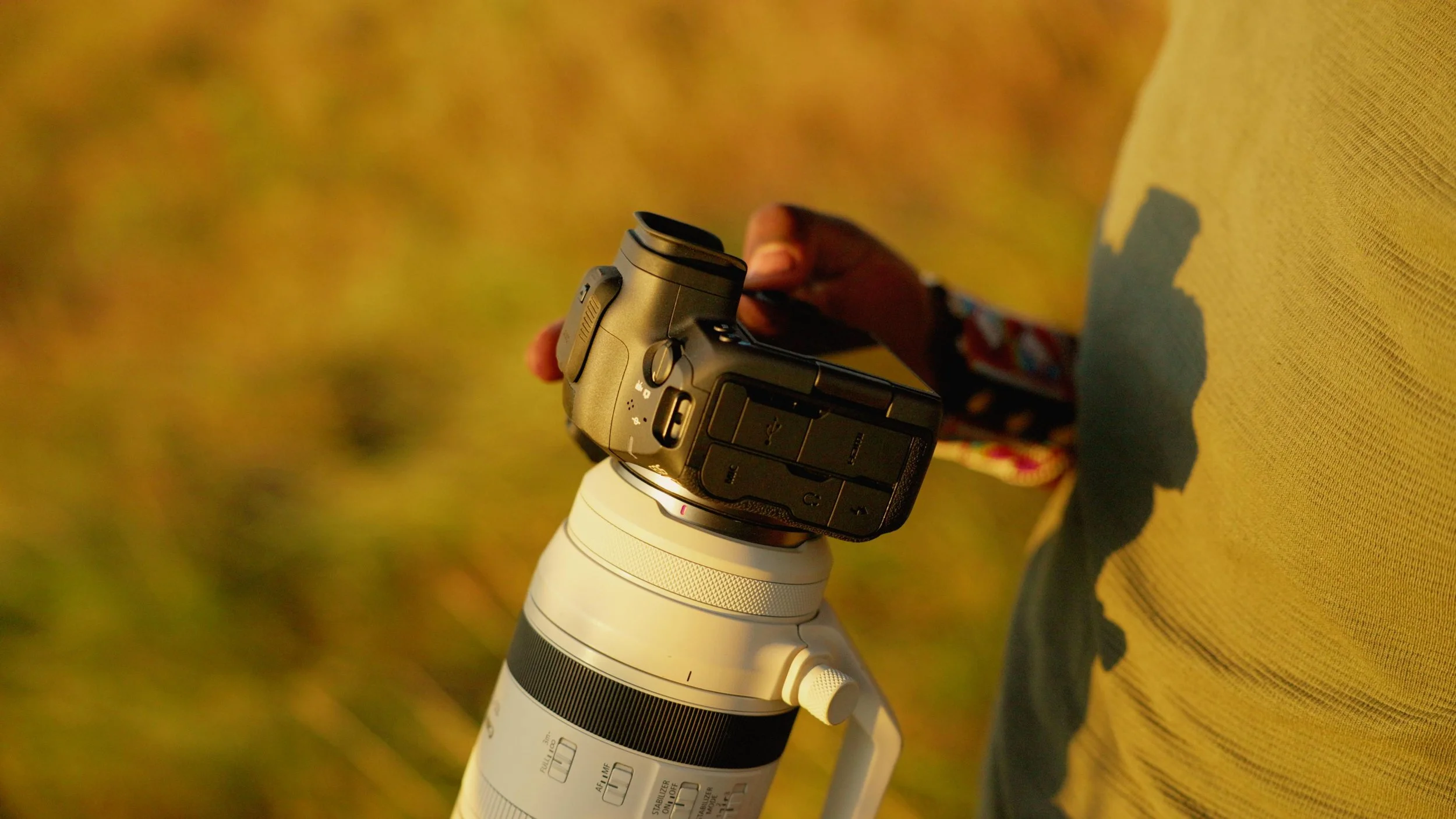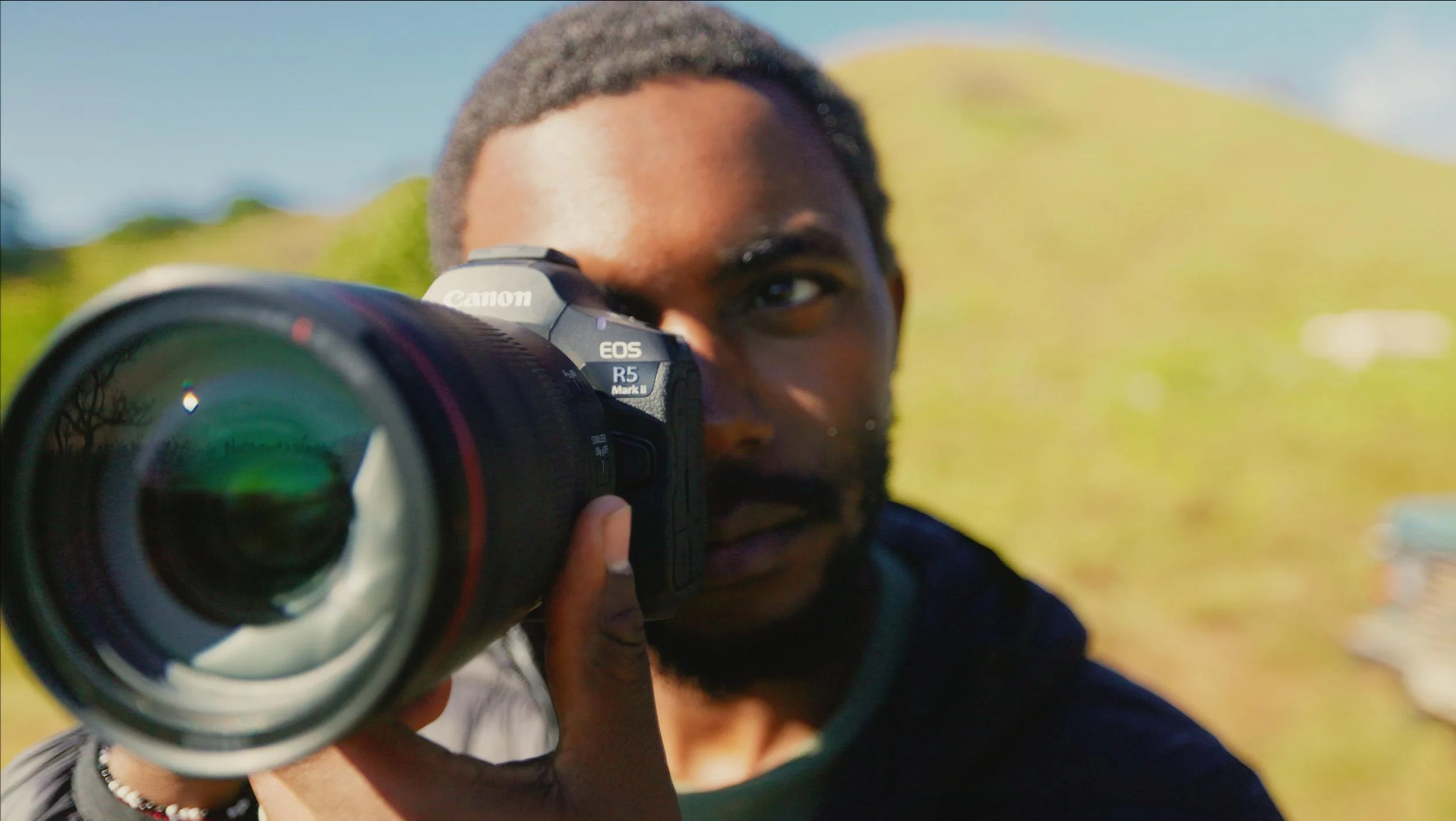How many African photographers and cinematographers have the opportunity to film wildlife off the continent?
While diversity and inclusion across industries that include arts, culture, entertainment and film have been a fervent topic-turned-movement, we are a long way from close comparisons to the sheer volume of foreign talent building their careers on bodies of work produced on the African continent. In many ways, this is especially true for natural history and wildlife where the exclusive, blue-chip world featuring sweeping savannahs, cinematic cats, and high-energy hunts has built its legacy by crafting narrative frameworks for the rich biodiversity found on the continent.
For Peter Ndung’u from Kenya, the ancestors aligned time and place in such a way that a recommendation from a peer, and an already acquired VISA for a trip to see his wife Ruth (an academic in residency in Austria) led to an opportunity to join the Gulo Film Production crew led by Oliver Goetzl on assignment for four weeks in the snow in Eastern Finland.
Here, he faced language and cultural barriers typical in these kinds of exchanges, but more so, imagine this equatorial man freezing his toes off in an environment completely unfamiliar in every sense.
Having shipped off with snow gear and eager to immerse himself in a new kind of wild, a lot of the learning leaned into the technical skills of not only filming and framing beautifully but becoming fully confident in the skills of piecing together and operating a vast array of equipment while navigating long, still and silent days staking out in hides and practically camping in locals backyards.
We were filming the Siberian Flying Squirrel, who moves from tree to tree with the special membrane that makes gliding possible. I saw it happening but not in good light during the day since it only became brighter at night later at that time of the year. Almost every day between 21:45 and 22:15, she (the squirrel) would out of her tree nest to pee, then go back up to feed and then go back in. Who knew squirrels have timetables? We wanted to film specific behaviour like mating and nesting but we also had to watch her nest every day from 11:00 to see if she would come out so those long hours were testing. It’s a different kind of patience that I hadn’t prepared for - I had brought two books and some downloaded content out of habit but ended up surviving off podcasts and music in my left ear so I could still look and listen.
His first long stint in unfamiliar terrain also meant that for the first time, he spent about half his time in the field seeing nothing at all - since the behaviour and patterns are unique to these species and wild spaces. We go on to joke about how our ancestors understood that this life was not for us, giving us big animals and warm environments to explore and call home all year.
Chuckles aside, these seemingly barren snowscapes offered Peter something time like this comes in handy for: active, feedback-based mentorship while reviewing footage in the field. The film and review sessions with Oliver meant that he was being actively critiqued and challenged to not only improve as a visual storyteller - but to improve (and potentially pivot right then and there) in every next shot framed. A working rhythm he is excited about introducing into field trips back home - and his teaching - when working with emerging talent and future peer-to-peer opportunities like the ones he has increasingly participated in, within the NEWF Community.
And since freezing his toes off for just Squirrels wasn’t an option (even the cool, flying kind), he trekked hours away to see European Brown Bears, a fascinating species few would ever see in their lifetime.
I have always wanted to see and photograph bears. In my mind, thanks to plenty of TV, bears were these intimidating and aggressive furry beasts that you dare not look in the eye or cross. That can be said to be somewhat true for Grizzly bears but then I met Oliver who debunked that myth for me and gave me the opportunity to see, film and photograph European Brown bears along the Finnish- Russian border. European Brown Bears are shy, skittish and avoid human scent. They are unique - they manage to be both intimidating yet cute and rarely attack unless provoked and because of just how much they’ve been hunted in parts of Europe. This sense of fear for humans developed over time, so they will often avoid people, in many cases becoming nocturnal.
One of Peter’s first Brown Bear photographs taken between 8pm and 11pm while the sun was setting in May this year.
Wildlife aside, at the time of this virtual, video interview, Peter spent time in the streets of Kenya photographing a revolutionary human phenomenon instead of his usual wild subjects.
I may be known for nature, wildlife and travel, but Kenya is too wild to not do something. Streets were lined up with so many young people all clearly wanting their voices heard. I’m a proud Kenyan seeing just how many people showed up and took a stand against being oppressed by a regime that wants to stifle its populace as they line their own pockets. This protest wasn’t led by any politician or political group. #RejectFinanceBill2024 started as a hashtag that made it to the streets and the people were loud. There’s a serious revolution on its way and it is going to be led by the youth of this country. They are loud, proud and demand to be heard. Ignore them at your peril. And I was here to join and to document it.
A triple threat storyteller mastering the moment while immersed in wildlife, social justice and mentorship - it has been no surprise seeing his photograph on the cover of Ethiopian Airlines magazine, Selamta.
I went on assignment to Reteti Elephant Sanctuary to document the community conservation work taking place in Namunyak. Gaining a behind-the-scenes look into the incredible work, care and dedication that the keepers have for the elephants was a humbling moment as I got to understand how much the Samburu value their wildlife. Speaking to the keepers, learning about each elephant’s story, and spending time up close with rescued baby elephants sniffing every part of my body and camera with their curious trunks was something else.
More recently, a paid partnership with Canon popped up on Instagram where he introduced the the new Canon EOS R5 Mark II. Sharing his first impressions, this partnership is a little cooler knowing he’ll be filming with it and sharing more of his incredible visual storytelling - offering a warm, energetic vibe to the techies and storytellers in and beyond Kenya who are excited about being part of the future of representing Africa’s wild spaces and stories in creative, deeply personal ways.
For more insight on the Canon EOS R5 Mark II features, visit his page and stay tuned for future updates as he shares his field work.
What’s next on his slate?
Keeping it simple and using everything he has learned to get stuck into specialising in one discipline at a time, to further develop a dynamic skillset and continue telling stories through his lens.


























